Headache & Migraines
Headache & Migraines
Headaches and Migraines are the most common neurological disorders suffered by Australians, but arguably the most poorly treated. These awful conditions can range from a mild annoyance in your day to day function, to severely debilitating.
Common
Concerns
Patients who suffer with headaches and migraines commonly report:
- They are taking too much medication, and often doesn’t work
- Family members, employers and their health professionals don’t’ believe how much the headaches and migraines are impacting their day to day life
- Immense fear that an attack will come
- Feeling like they are “walking on eggshells”, that they need to plan their entire life around the possibility of an attack
- Feeling anxious and depressed about having to live with the condition
- Dissatisfaction with their current medical and health plan.
Could your Headache or Migraine be coming from your neck?Find out by taking our 2 minute online test.
Our
Diagnoses
We have built our entire practice around solving these problems. Headache and Migraine, like any other medical condition, can only be treated effectively if the diagnosis is correct. When we say diagnosis, we don’t just mean giving it a label. We mean:
- Understanding what the precise cause of your individual headache or migraine is (..it might not be what you think)
- Appreciating the impact that having headaches and migraines has on you, your family, your friends and your life
- Having an awareness of how headache and migraine is impacting your mental health
- Being aware of the social, cultural, financial and personal barriers that have meant you haven’t been able to get on top of things yet.
Our
Solution
After this diagnostic process is completed, we provide the most comprehensive treatment plan to help get things back on track. Your treatment plan is tailored individually to your goals (no “cookie-cutter” treatment plans), your individual condition, and your personal circumstances. Your treatment plan will include:
- Goals set for the individual outcome that you want.
- The expected number of sessions and how long it will take
- The exact treatment tools and methods that will be undertaken in the clinic through the journey
- The lifestyle changes and exercises that you will need to complete in your own time to give yourself the best chance getting a good outcome
- The dates for when a full re-assessment will be undertaken to ensure you are still on the right track.
There is a page dedicated to all of the different types of headaches and migraines we treat - where you can find out more information tailored just for you and your headache, migraine or facial pain type. Click below to explore more.
FAQs

Do you have pain on the right side of your head? Behind your right eye? Throbbing pain in your right temple? If you get right-sided headaches, then this is the blog for you! Firstly, the most important thing to consider when suffering with right sided headaches, is that it’s nothing catastrophic – what we would call a ‘red flag’. Red flags that we look out for include: It’s a brand-new headache that you have never had before It’s the worst headache you have ever had If any neurological symptoms are occurring Numbness or tingling in your hand or limbs Speech impairments Face drooping etc. If any of these things have started happening, that's never ever happened before, you need to get assessed immediately. We highly suggest going to the hospital or to the doctor and make sure that nothing nasty, like a stroke or tumour or a bleed, or anything like that is happening. However, if all of that's clear, your MRIs are clear, you've been to the GP, it's been there for a little while and you are still suffering, then we may just have the answer for you! Generally, what we find is that there's a problem on the right-hand side of your neck. Normally at the OC1 joint or the C23 joint, a little bit lower down. The area of your pain gives us a good idea as to what joint might be the cause of the pain. The first one, if the pain is right at the very top of the head, it can sometimes go up and behind the ear, around the temple and into the temple - it's more likely to be the OC1 joint at the top of the neck that's causing this type of pain. Whereas, the C23 joint, refers the pain up and over the head and into the eye, and behind the eye. This is more likely for a right-sided cluster headache, for example, or a right-sided migraine that's just throbbing and thumping on one side of the head. On occasion, it can be a combination of both joints, OC1 and C23 causing the symptoms to happen. If you have right-sided headaches and your scans are all clear, then you should consider having your neck assessed. Specifically, the right side of your neck, the OC1 joint, the C23 joint, or the inferior oblique muscle that connects the two. Hope this information was helpful – if you have any questions, please reach out to us here .

Triggers… Did you know that they may not be as important as you might think? We get a lot of questions asking why certain things trigger a person’s headache to begin. Most often we hear things like red wine, chocolate, stress or not sleeping enough. In the literature these things are called “triggers”. It’s common for patients to identify what their triggers are - so that they can avoid these triggers with the intent of actually not getting the headaches and migraines anymore. While this might seem simple, surely its easy going without a few things, but there's a problem with this approach… At some points, sometimes there are legitimate things that can cause headache and migraine to happen, like when a person has an allergy. So if you've got something like celiac disease or are allergic to some kind of substance, and genuinely allergic to it, then your inflammatory response may cause the headaches and migraines to happen. However, with triggers like red wine, chocolate, bananas, tomatoes.. it is common that sometimes the migraine happens and sometimes it doesn't. For example; We often hear people say “I can have half a glass of wine and I'm fine, but if I have one glass of wine I'm not” or “I can have half a glass of wine if I'm not tired, but if I'm really tired and have half a glass of wine then I'm wiped out for three days”. It’s really quite mystifying! Triggers that sometimes happen with patients leave them feeling baffled as to what's going on. So lets go back a step… what is the cause of the headaches and migraines in the first place? Headaches and migraines occur when you have a sensitization process happening at the back of your brain at the top of your spinal cord in what's called your ‘brainstem’. There is a lot of different areas that pass in through this special area. Such as the neck, jaw, face, your skin around your face, and a few things from your fight or flight response, your tongue and your ears as well. Also of course, the feeling of the blood vessels inside your brain also have an influence here. All of these things go into the same part of your brain. Then what happens is that part of the brain becomes sensitized. So, if there's anything that's out of the ordinary for any of those things, all of a sudden it starts to become a bit of a problem. If you've already got a sensitized system and then you have something that impacts the serotonin level that's going through your bloodstream or perhaps the blood pressure going up or down, then those are normal changes in serotonin, those normal changes in blood pressure, those normal changes in posture perhaps start to cause a headache and a migraine to happen when generally it shouldn't and normally it doesn't. So… knowing this, instead of looking at what triggers we can avoid… It may be more beneficial to look at what is sensitizing your system in the first place. What is the cause of a sensitized system? The most common one is the top of the neck. The top three joints of the neck can sensitize that system really, really nastily in some people (often, it's actually just one joint). When one or all of these joints are not moving nicely, it can cause a myriad of different problems like; headaches, migraines of nausea, vomiting, dizziness. Here’s our way of explaining it…. If, say for example, a parcel was being sent from overseas to arrive here in Australia. The parcel is a box, and in the box was a hat, sunglasses, shorts and a book inside. Now as it is ready to be sent… a person in the warehouse puts a bag of anthrax into the box. The next thing you know… it’s all packaged up in the one box and sent to customs in Australia. Obviously when it gets to customs in Australia, the alarms go off, it goes absolutely bananas. The red light starts to shake, the alarms go off, the dogs start to bark. The right squad comes in to work it out. You can agree that there's nothing wrong with the hat, sunglasses, shorts or the book in the box... But the whole box is being shown as being dangerous because there's anthrax in it, okay? So, on its own, the hat, the sunglasses, the shorts and the book are actually all pretty good, but because the box has anthrax in it, the alarm system says that it's actually really, really dangerous and that box should be treated with absolute caution. This is kind of what happens with headache and migraine. If you've got something that's sensitizing the system. Say for example, the neck is acting as the anthrax in this situation. When you have extra things going into that box, e.g. a bit more tired than usual, a bit more exercise than usual, a bit more hormones or less hormones than usual, a bit more serotonin or less serotonin than usual. Then those changes are being interpreted as a really big alarm signal when it comes to the headache and migraine. So, we need to find out what the anthrax is in your delivery box, I suppose. Majority of the time it's the neck that's causing that to happen. The advice I would give is to get your neck checked by someone who knows what they're doing. Unfortunately, there are a lot of people who claim to know what they're doing. What we have created is an eBook that explains this part of the brain. This part of the brain is called the T rigeminal Cervical Nucleus , but we like to refer to it as ‘The Headache Hub’. If you're interested in getting a copy of that feel free to click the image below, and the PDF version will start to automatically download. Have a read through what it's all about. It's about finding out what's sensitizing the system in the first place so that we can get your headaches and migraines under control. Hope that has been helpful – if you have any questions at all – feel free to reach out to us here ! Cheers and bye for now.

If you're a lady who lives with migraines once a month and can set the calendar to when your next headache or migraine will come, then this blog is for you... We may just unlock the hidden secret as to why your headaches and migraines continue to be a burden, no matter what it is that you've tried before! If you live with hormonal headaches, you will often have to plan your diary and events around this time of the month, because when your cycle hits - you may feel knocked out, end up in bed, and have to take plenty of medication. Within the last 5-10 years, a new understanding of how headaches and migraines occur has come into focus. They are caused by a sensitization process. It’s a process that occurs at the bottom of your brain... an area which takes in all of the nerves from pretty much the top lip, all the way up and over to the back of your neck. In essence, your eyes, your ears, your teeth, your tongue, your lips, the back of your neck and the blood vessels inside your head all pass through the same area. What's less recognized is that this nerve centre is modulated by a chemical called serotonin. Serotonin is your happy chemical - the one that causes you to feel deep love and affection. It's the hormone that makes you feel good! When we're talking about hormonal headaches and hormonal migraines, it's important to understand what happens in the menstrual cycle through the month. In mid cycle what happens is that the serotonin increases, then decreases at the end of the cycle, and will then return back to the normal amount during other times of the cycle. So, what has this got to do with your headaches and migraines? Well, there used to be a really strong thought that it's all about the changes in the hormones that cause these headaches and migraines to happen. But, there's a study that came out a number of years ago that showed that it didn't matter if you got headaches or migraines or not, those hormones did the same thing. So some people were getting the headaches and migraines, others weren't, but the hormones were acting the same way. What does that tell us about how the hormonal headaches and migraines work? Well, it might not be the hormones to blame in the first place. What this sensitization means is that if the levels of serotonin is too much or too little, your brain perceives that normal change as a threat. It sees it as something that it needs to have a reaction to, even when there is no need. The problem is, this menstrual cycle is a normal process, and it happens to all females, so what's causing this whole sensitization process to happen? It's not the hormones because that is just a normal process. So, what could it be? Let's go back to talking about that Nerve Centre at the bottom of the brain. There's something that's sensitizing this nerve centre... and can cause the hormonal headaches and migraines to occur. What we've found over a long period of time here treating at The Headache and Pain Management Centre, through many courses we've done, through many thousands of patients that we've seen over the years is that quite often it's the neck that's sensitizing this whole process to occur. Even though the neck has nothing to do with your hormones, it is the "hidden prankster" that's sensitizing this area. It's almost like a ticking time bomb going off! So when your serotonin drops, your brain perceives that change in the hormones as the threat (even when it isn't), because it's already sensitized from what's going on with the nerve signals coming from your neck. What this means in practical terms, there is usually a joint or a muscle or sometimes a combination of both, that's sending a signal into that nerve centre. We like to explain this like a dripping pipette into the water, which over time fills a glass up to 85, 90%. Then at the mensural cycle, the hormones push that water causing it to overflow the glass and causing the headache to happen, so to speak. The hormones themselves are only a little bit of the problem, but the real problem is lying dormant for the rest of the month. It's a bit of an interesting concept if you've never heard that before, but we've seen it way too often to know that this is something that really does need to be considered. How do we know if it's your neck? Here’s a few hints to know if your hormonal headaches might be coming from your neck… 1. If your headache is on one side and can swap across to the other side. So, one month it might be on the right, the other month it might be on the left. If it's moving around, the neck is a prime suspect. About the only thing that can cause a headache to move like this, is your neck joints and the neck muscles. It can be stiffer on one side one month, stiffer on the other side another month, which causes the headache to be on the right or the left. 2. If your headache is locked to one side. If you have a think about it - if it's a genuine hormonal issue, the hormones will have an impact on both sides of the body. You can't just have hormones impact the right side of your brain or the left side of your brain. It impacts your whole system! In the few cases where it is genuinely hormonal, it's generally a really explosive headache that is on both sides and nothing is able to touch it, and the neck will often assess clear in these cases. But if it's on one side or the other side and it's locked there, then it's really worth having your neck assessed to see if the neck is driving this pattern to happen and the hormones are more an innocent bystander. 3. If other medical interventions haven’t worked Lastly, if you've had your hormones looked at and they're normal, if you've had other medications that you've tried, if there's been birth control that you've tried, there's been other interventions that have been tried and nothing seems to work, then it's really important to have the neck assessed because it might just be the missing link in the puzzle. It might well be the thing, the hidden prankster if you like, that's causing all of these issues to occur. If you are in one of those three groups then it's really, really important to get your neck assessed, to see if there is an issue with the neck causing these hormonal headaches and migraines to occur. How do we assess the neck? That's a really good question. It may be a genuine hormonal issue, or it could be your neck. What we do here at The Headache and Pain Management Centre that allows us to determine whether or not it’s your neck that’s the cause, is a very skilled and comprehensive assessment of the top of the neck and all of the other factors that might be driving your headache and migraine to occur. Our process: First step - If you’re unsure whether it’s worthwhile having the assessment, we happily offer free 15 minute phone calls to listen to your story. Which, based on our judgement will be able to recommend if an initial consultation is suitable for you. Everyone is an individual. Everyone has different stories, and we want to make sure that you're not wasting your time or money trying something new. Second step - Is to have an assessment with us, with one of our physiotherapists. This goes for one hour where we look at the history, we see what's been happening, what the impacts are, what you're hoping to get out of treatment. We will then do a full physical assessment to decipher if your headaches and migraines are coming from your neck. We know what we're looking for here. We're looking for stiffness in the joints, we're looking at the way that your neck moves, we're looking at the way that the muscles are behaving at the top of your neck as well, to see if it's something worth considering. If it is something worth considering, what we'll do is we'll tell you how we can help you out. We will tell you exactly how long it might take, how many sessions it might take, what we'll be doing in the room, what you'll need to do at home. We may recommend other interventions or scans or other things and will work alongside your GP to get the results that you need. We've been doing this now for a decade! We have many, many people that we've helped with these hormonal headaches and migraines. We want you to be the next person that we can help out. If this is something that interests you, if you are at your wits' end and wanting some help with this - the best thing you can do is to book a phone call with one of our team, using the link below. https://calendly.com/hpmcentre/10-minute-phone-call-with-hpmcentre

If you have pain in the back of your head with a headache or migraine then this blog is for you. A lot of the time all the scans are clear and you've been to your doctors and they can't find anything else that's wrong. There's three things that be causing this pain, here it is... The first and most common cause is a referred pain from the joints, the top three joints at the back of your neck. Most commonly it's a joint right below your skull, just at the top of the neck that can cause some deep tension-like pain that goes right into the back of your head. Sometimes it can refer pain around to the front, into the temples as well. It's really common when you have a very stiff top joint. They often call it the atlas or the atlanto-occipital joint. We’re talking about the joint between the skull and C1. What needs to be careful when you are having that assessed, is that it's moving in the correct direction. If you’re seeing a chiropractor who is manipulating it, doing a really big crack or a click or something with it – it may not be the best thing for it. It actually might just need a bit of a glide on the joint to desensitize it. The second thing. There's a lot of muscles that attach into the top of the neck - they attach from the skull down to C1 and into C2. So into the top bone, which I said is the atlas. The second one called C2 or the axis is what it's called. There's a lot of muscles that attach into the head and a lot of muscles that go down, attach into the neck. Those muscles themselves can refer pain into your head. So even though it feels like your head is the issue, it's the muscles themselves, which are referring the pain. Some of the muscles are called the suboccipitals. The occipital muscles. Rectus capitis. There's a whole swathe of little ones that can refer pain into the back of the head and they're really important. Muscles can often be forgotten when it comes to headaches. Although, it’s so important for them to be assessed to decide the best course of treatment. Do we need to stretch them? Do we need to do something with a bit of massage. Is dry needling an option? Perhaps it's strengthening that's the issue. Reality is, one thing that works for one person might not work for the other person. The third one that can refer pain into the back of the head, is a nerve issue. It's not really that common, but when it is this condition, it is really painful. It’s called occipital neuralgia. There's a nerve called the greater occipital nerve that comes up and supplies the skin predominantly. It feels really compressive when you've got an issue there and sometimes it can sting and it can stab at the back of the head. It's really, really nasty when you do get it and it's really, really painful. So that nerve itself can be a driver of pain. There can be inflammation around and it can be compressed or it could just be sensitized. So there's nothing wrong with the nerve, but the signals coming from the nerve, is actually tricking your brain into thinking that there's something really nasty going on there. We do see a lot of people that are diagnosed with occipital neuralgia, although the reality is it's actually not the nerve itself that's the issue. It's referred pain, from the joint or from the muscle on its own. It's really important to get an assessment if you have got pain at the back of the head. It can be just diagnosed as a tension type headache where it's a lot of paracetamol or other things that are being prescribed to try to wind them down. Perhaps some stretching or some movement might do a little bit of a trick, but not the whole thing. Which is why it’s so important to look at the entire picture. What's sensitizing the whole system? Is it a nerve, muscle, or joint. Is it a combination? Because when we're talking about pain of any type, it's all about the sensitivity of the nervous system, that is the issue. All of those other things are driving that sensitivity to happen. So if it's your muscle, if it's a joint, if it's your nerve, it does need to be assessed. I hope this helps and gives you some understanding of what may be happening. Please feel free to click here to get in touch if you have any questions. Have a great day!






